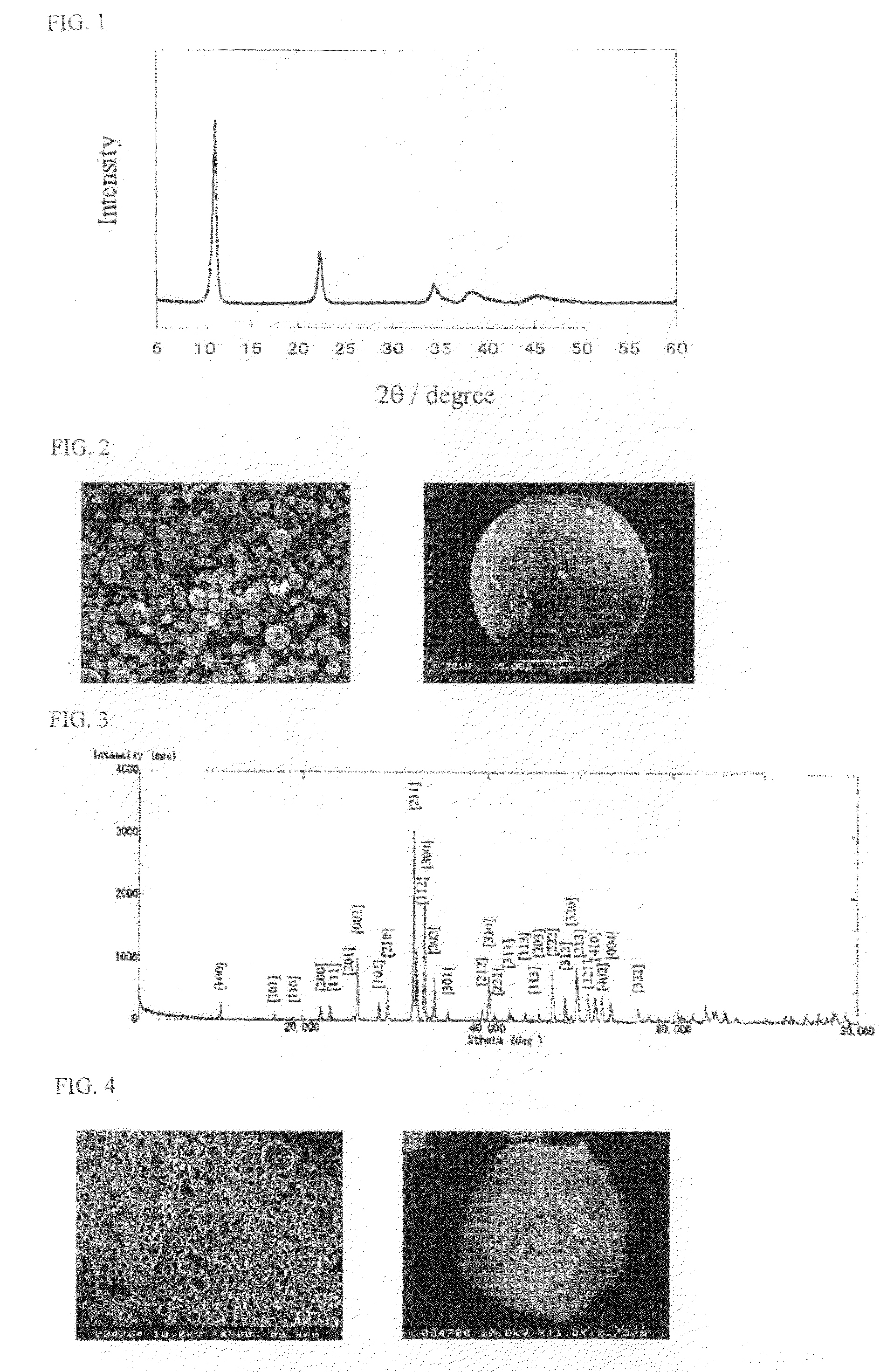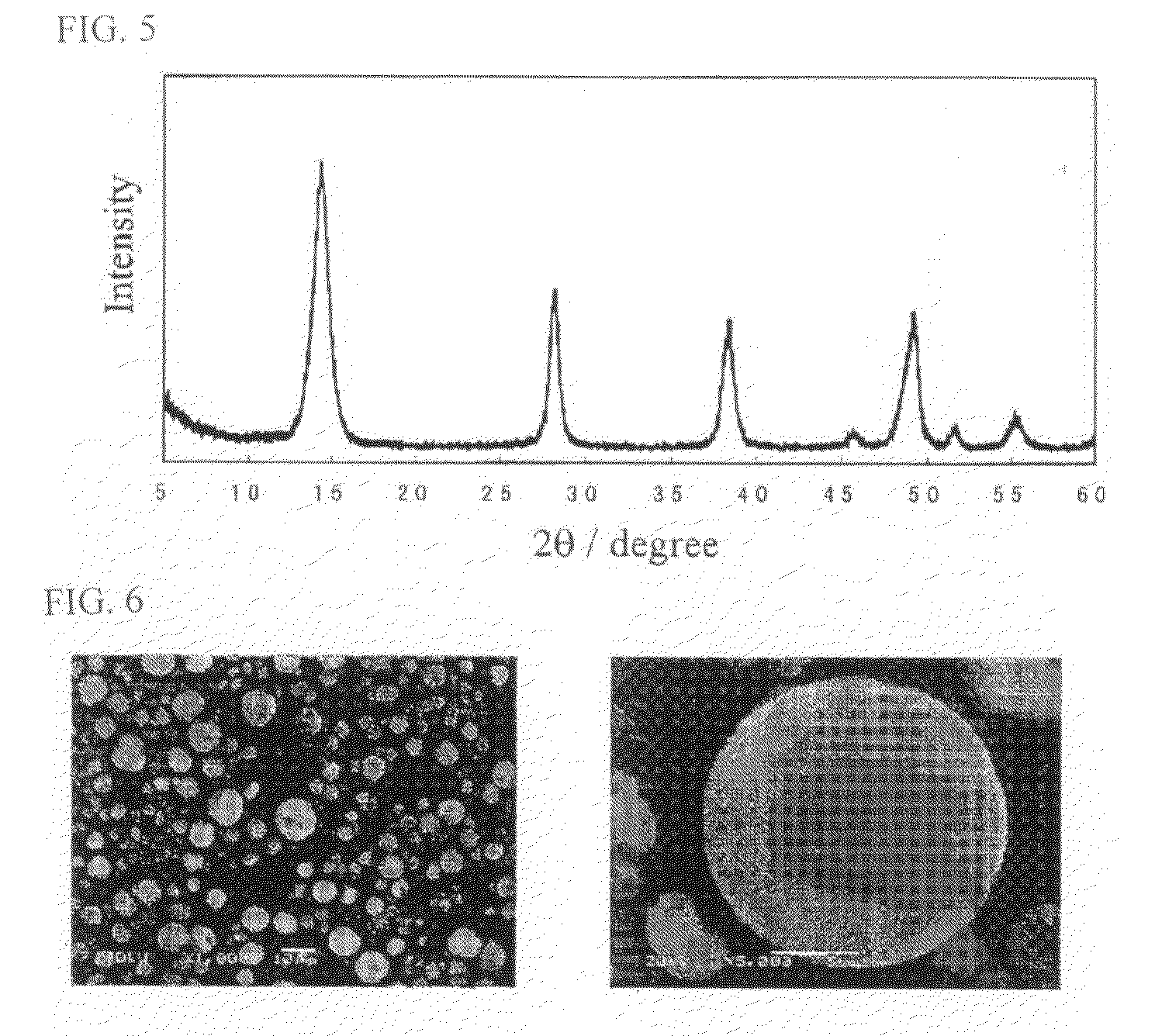Adsorbent for radioelement-containing waste and method for fixing radioelement
- Summary
- Abstract
- Description
- Claims
- Application Information
AI Technical Summary
Benefits of technology
Problems solved by technology
Method used
Image
Examples
example 1
Synthesis of LDH Powder Adsorbent
[0036]A 0.1 M NaOH solution was added dropwise at a dropping rate of 1.7 mL / min while 25 mL of a 0.03 M mixed aqueous solution of MgCl2 and AlCl3 having a mixing ratio of Mg / Al=3 / 1 (mol % ratio) was stirred at room temperature. The 0.1 M NaOH solution was successively added dropwise in order to maintain the pH to 10. Subsequently, 60 mL of the resulting suspension was fed into a fluorocarbon resin container (100 mL volume), and the container was covered with a cap. The container with the cap was placed in a stainless steel container, and the stainless steel container was then sealed. The suspension was then aged in an oven at 150° C. for 24 hours. The sample after the reaction was filtered and then dried at 50° C. for 24 hours to prepare an LDH. Spray drying was performed with a spray drier (DL-41, manufactured by Yamato Scientific Co., Ltd.) at a drying temperature of 180° C., a spray pressure of 0.16 MPa, and a spray speed of about 150 mL / min while...
example 2
[0040]Fluorapatite (FAp) powder used as a solidification agent was synthesized as follows. A calcium carbonate powder was heated at 1,050° C. for three hours and then cooled to 280° C. The powder was then digested with distilled water to prepare an aqueous solution of calcium hydroxide. Nitrogen bubbling was performed for 24 hours, and aqueous ammonia was added to the aqueous solution while a mixed solution of phosphoric acid and hydrofluoric acid was gradually added dropwise so as to maintain the pH to 7.5 or more. The resulting FAp suspension was filtered and washed. The FAp suspension was again dispersed in distilled water (FAp / water=3 weight percent). Spherical particles were prepared by spray drying using the dispersion liquid as in Production Example 1. The particles were then calcinated at 800° C. for three hours and were used as a matrix powder for combined sintering.
[0041]FIG. 3 shows an XRD pattern of FAp sintered at 1,200° C. The pattern showed only diffraction peaks of F...
example 3
[0043]A sintered article was prepared as in Example 1 except that the spherical LDH powder that was synthesized and adsorbed iodine in Example 1 was mixed with the above spherical FAp powder in a mass ratio of 30:70 (mass percent). As a result, cracks were not formed in the sintered article. Thus, a uniform solidified article was obtained.
PUM
| Property | Measurement | Unit |
|---|---|---|
| Temperature | aaaaa | aaaaa |
| Temperature | aaaaa | aaaaa |
| Pressure | aaaaa | aaaaa |
Abstract
Description
Claims
Application Information
 Login to View More
Login to View More - R&D
- Intellectual Property
- Life Sciences
- Materials
- Tech Scout
- Unparalleled Data Quality
- Higher Quality Content
- 60% Fewer Hallucinations
Browse by: Latest US Patents, China's latest patents, Technical Efficacy Thesaurus, Application Domain, Technology Topic, Popular Technical Reports.
© 2025 PatSnap. All rights reserved.Legal|Privacy policy|Modern Slavery Act Transparency Statement|Sitemap|About US| Contact US: help@patsnap.com


